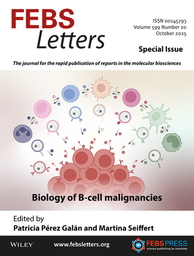Alexander Ruban - Dynamic membrane landscapes of light harvesting complex II
In 1991, my colleagues and I published a hypothesis article that proposed a mechanism that controls light harvesting in plants and protects them against photodamage. The major light harvesting complex, LHCII, was suggested to undergo aggregation upon exposure of the plant to damaging levels of light. Aggregated LHCII was found to be much less efficient in light harvesting, as it promptly dissipated absorbed energy into heat, possessing a very low chlorophyll fluorescence yield. Non-photochemical quenching (NPQ) is a term coined to describe this reduction in chlorophyll fluorescence yield. This article is a story of how the hypothesis that LHCII aggregation is involved in NPQ is developed into a model that is now becoming broadly accepted by the research community.



Join the FEBS Network today
Joining the FEBS Network’s molecular life sciences community enables you to access special content on the site, present your profile, 'follow' contributors, 'comment' on and 'like' content, post your own content, and set up a tailored email digest for updates.